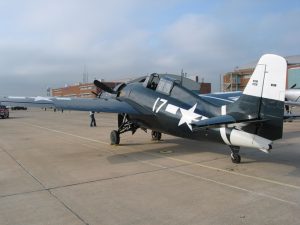By Steve Johnson
In the summer of 1942, the Japanese were winning their war with the United States. They had sunk or crippled America's battleship fleet at Pearl Harbor and snapped up a chain of islands across the Pacific which could, if fortified, form an impenetrable barrier to the U.S. Navy. Now the Imperial Japanese Navy was looking for a knockout blow, to destroy the American aircraft carriers before American industry replaced its losses.
Admiral Isoroku Yamamoto devised a plan to seize Midway Island, at the extreme end of the same island chain as Hawaii. Midway was within air range of Hawaii, so the Americans could not tolerate a Japanese airfield there. They would have to come and take it back, and when they did, Japan would have six carriers waiting for the two American carriers.
But the U.S. Navy was aware of the plan. Codebreakers had discovered the symbol for Midway Island in the Japanese naval code and knew something was coming. Admiral Chester Nimitz set his carriers to ambush the Japanese when they came in range to attack Midway - and he had three carriers, not two, because the sinking U.S.S. Yorktown had limped home from the Battle of the Coral Sea, gone into drydock, and, after 72 hours of non-stop repair work, steamed back out again, ready for action.
The American planes spotted the Japanese first, while they were removing torpedoes from their planes and loading them with bombs. The decks of the four Japanese carriers were crowded with bombs, torpedoes, and gasoline - a perfect target. But each American squadron of torpedo bombers arrived a few critical minutes apart. Japanese fighters shot down one American squadron after another.
Then dive bombers from the U.S.S. Enterprise and Yorktown arrived high over the Japanese fleet. Through good luck, three squadrons arrived at the same time, and at a moment when the Japanese fighters were down at low altitude finishing off the American torpedo planes. The dive bombers struck, setting fire to three of the four carriers. The fourth, Hiryu, launched a strike which hit and ultimately sank the Yorktown. But the Japanese fleet was crippled and withdrew from its attempt to take Midway. Never again would the Japanese be able to take the offensive in the Pacific; after Midway, the Americans, not the Japanese, were winning the war.
Read more about the decisive battle at Midway on the Web and in the library:
In the Library
Graveyards of the Pacific
Eerie and magnificent photographs from the National Geographic show what remains of those ships lost at Pearl Harbor, Coral Sea, Midway, and other Pacific battles. Includes a description of the battles.
Incredible Victory
Long considered to be a classic work on World War II, this vivid narrative of the Battle of Midway is sympathetic to both sides. Based on interviews with hundreds of American and Japanese survivors.
The Price of Admiralty
Keegan illuminates the history of naval combat by expertly dissecting four landmark sea battles, each featuring a different type of warship: The Battle of Trafalgar, the Battle of Jutland in World War I, the Battle of Midway in World War II, and the long and arduous Battle of the Atlantic.
The title is derived from Rudyard Kipling's poem, Song of the Dead, "If blood be the price of admiralty, Lord God, we ha' paid in full!"
Twenty-Five Yards of War
The stories of ordinary sailors, Ensigns George Gay and Albert Earnest, are told.
Victory at Sea
A documentary series stressing the role of sea power in the Allies' victory. Includes footage taken by both Allied and Axis combat photographers. Music by Richard Rodgers.
Volume 1 includes Design for War -- The Pacific Boils Over -- Sealing the Breach -- Midway Is East.
On the Web
The Battle of Midway
World War II History Info presents an online book, Battle Of Wits: The Complete Story Of Codebreaking In World War II by Stephen Budiansky.
Battle of Midway
A great deal of information from Naval History and Heritage Command..
The Library of the Marine Corps
In addition to a superb collection of expeditionary and amphibious warfare materials, the library also has exceptionally strong collections in the New Sciences, leadership, Civil War history, World War II, and general military science.
Search their catalog for holdings by author, title and subject. Use the MERLN system to connect to other military libraries. Items listed on these catalogs may be available for borrowing through interlibrary loan.
Steve Johnson is a history and science teacher at St. Michael the Archangel High School in Fredericksburg.




